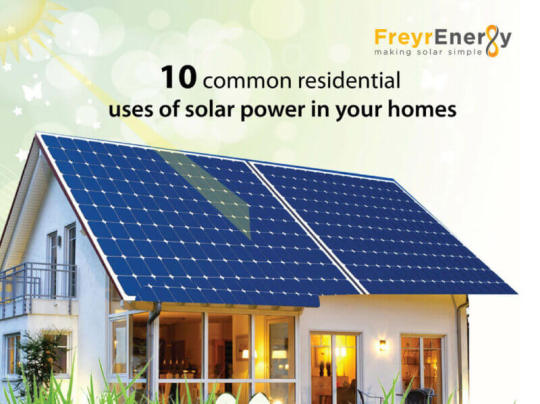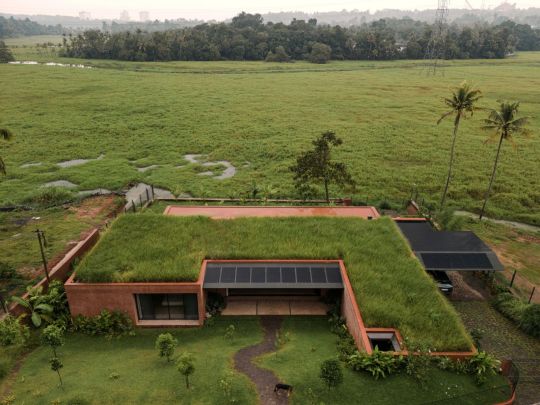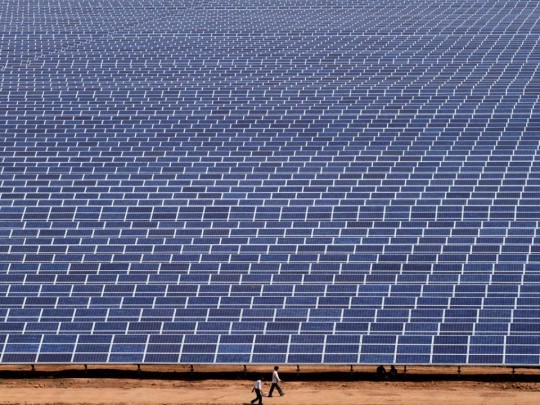#Solar Energy in India
Explore tagged Tumblr posts
Text
Solar Power in India - Everything You Need to Know About Solar Energy

Solar power is changing the way we think about energy in India. With so much sunlight throughout the year, India has the perfect conditions to use solar power effectively. Let’s talk about what solar power is, how it works, and why it is becoming a big part of our energy plans. We will also go over its benefits, challenges, and what the future looks like for solar energy in India.
What is Solar Power?
Solar power is energy we get from the sun. Solar panels capture sunlight and turn it into electricity. These panels use photovoltaic (PV) cells, which work using something called the photovoltaic effect. Solar power is clean, sustainable, and great for the environment. It is an excellent way to lower pollution and fight towards climate change.
How Does Solar Power Work?
Here is how solar power is made:
Capturing sunlight: Incoming sunlight is absorbed by solar panels by means of PV cells.
Generating electricity: The photovoltaic effect changes sunlight into direct current (DC) electricity.
Making it usable: The inverter takes charge to convert DC(Direct Current) into AC(Alternating Current) electricity to supply power to homes and businesses.
Learn about the process behind how solar power works with KP Group.
Why is Solar Power Important for India?
India is moving quickly toward solar energy. It is affordable, clean, and helps us meet our growing demand for energy. Here is why solar power matters for India:
Plenty of sunlight: Most of India gets 250-300 sunny days every year, which is perfect for solar energy.
Better for the world: Solar power is clean and it reduces our dependence on fossil fuels.
Boosts the economy: The solar industry creates jobs and brings in investments for renewable energy projects.
Energy security: Solar power reduces the dependence of India on imported sources of energy.
Benefits of Solar Power in India
Good for the environment: Solar energy cuts down on carbon emissions, making the air cleaner.
Cost-effective: Solar panels require very low maintenance after installation and provide free energy.
Energy independence: Solar energy makes India less dependent on other countries for power.
Flexible: Solar systems work for homes, businesses, and even large-scale solar power plants.
Challenges in Solar Power Adoption
While solar power is amazing, it is not without its challenges:
High initial costs: Solar panels and installation can be expensive upfront.
Land needs: Big solar power plants need a lot of space, which can be tough to find.
Sunlight dependency: Solar power doesn’t work as much on cloudy days or at night.
Infrastructure issues: India’s power grid and storage systems need upgrades to handle solar energy properly.
Solar Power in India: Current Status
India has made big strides in solar energy. It is now one of the top countries in the world for solar power installations.
Some Key Stats:
India had more than 70 GW of installed solar capacity in 2024. The target value for 2030 is to reach 280 GW.
Bhadla Solar Park of Rajasthan is among the largest solar parks in the world.
The National Solar Mission is pushing for solar energy to play a big role in India’s energy mix.
Applications of Solar Power
Solar energy is useful in many ways:
Homes: Rooftop solar panels are financially beneficial for families through saving electricity bills.
Businesses: Companies use large solar systems to cut costs and meet sustainability goals.
Farms: Solar-powered pumps help farmers with irrigation, reducing reliance on the grid.
Remote areas: Solar power lights up villages without access to traditional electricity.
Future Potential of Solar Energy in India
The future looks bright for solar energy in India. New technologies are making solar panels more efficient, and better storage solutions mean we can use solar energy even when the sun is not shining. India is focused on becoming a leader in renewable energy, and solar power is a big part of that plan.
What is New in Solar Technology?
Bifacial solar panels: These panels capture sunlight from both sides that adds up to higher efficiency.
Energy storage systems: Batteries like lithium-ion store extra energy for later use.
Floating solar plants: Solar panels on water bodies save land space and work efficiently.
Find out more about these innovations at KP Group.
Why Invest in Solar Power?
Switching to solar power is smart for both the planet and your wallet. Here is why:
Save on electricity bills.
Help reduce pollution and fight climate change.
Take advantage of government subsidies and tax benefits.
Government Incentives:
Subsidies for rooftop solar: Homeowners can get financial help for installations.
Tax benefits: Businesses investing in solar energy enjoy tax perks.
Net metering: Sell any extra electricity your solar system generates back to the grid.
Interested in solar investments? Contact us.
Environmental Impact of Solar Power
Switching to solar power makes a huge difference:
Reduces air pollution by using less coal and gas.
Saves water because solar plants need very little compared to thermal power plants.
Helps combat climate change by lowering carbon emissions.
Conclusion
Solar power is the way forward for a cleaner, greener world. India’s focus on solar energy is setting the stage for a future with less pollution, more energy security, and better sustainability. By tackling challenges and embracing solar innovations, India is on track to lead the renewable energy revolution.
#solar power#solar energy#renewable energy source#solar panels#photovoltaic effect#solar power plant#invest in renewable energy#solar energy in india#solar power in india
0 notes
Text

Nimbus solar solutions installed solar panel for irrigation purposes
#solar energy in india#solar company in india#solar panels#solar energy#solar power in india#solar power#roof top solar companies#rooftop solar solutions#rooftop solar solutions in india#rooftop solution
0 notes
Text
10 Practical Uses of Solar Power for Residential Homes - FreyrEnergy:

In recent years, solar power has emerged as a versatile and sustainable energy solution for residential homes. From reducing electricity bills to minimizing carbon footprint, the uses of solar power in homes are diverse and practical. Let's delve into 10 practical applications of solar power for residential homes:
Top Uses of Solar Power in Homes:
Let us check the uses of rooftop solar panel in residential, serving as an alternative, renewable, and green energy source.
Alternative Electricity Source:
Solar panels installed on residential rooftops serve as an alternative source of electricity. By harnessing sunlight and converting it into electricity, homeowners can power their appliances and lighting, reducing reliance on traditional grid electricity.
Solar Water Heating:
Solar water heater systems utilize solar energy to heat water for domestic use. These systems are cost-effective and environmentally friendly alternatives to conventional water heaters, providing hot water for bathing, washing, and other household needs.
Solar Cooking:
Solar cookers harness sunlight to cook food without the need for traditional fuel sources such as gas or electricity. They are ideal for outdoor cooking and can be used to prepare a variety of dishes, ranging from simple recipes to elaborate meals.
Solar Ventilation:
Solar-powered ventilation fans help regulates indoor temperature by expelling hot air from attics and other enclosed spaces. By reducing the need for air conditioning, these fans contribute to energy savings and enhance indoor comfort.
Portable Solar Chargers:
Portable solar chargers allow homeowners to harness solar energy system to charge their electronic devices, such as smart phones, tablets, and laptops. These chargers are convenient for outdoor activities and emergencies, providing a reliable power source wherever you go.
Solar Lighting:
Solar-powered lights and lamps illuminate residential spaces without the need for grid electricity. They are ideal for outdoor lighting, landscaping, and decorative purposes, enhancing the aesthetics of homes while reducing energy costs.
Solar Security Systems:
Solar-powered security cameras and lights offer enhanced security for residential properties. These systems utilize solar energy to operate, providing continuous surveillance and deterrence against intruders without relying on grid electricity.
Solar Water Filtration:
Solar-powered water filtration systems purify water using solar energy, making it safe and drinkable for household use. These systems are especially useful in remote areas where access to clean water is limited.
Solar Air Conditioning:
Solar-powered air conditioning systems use solar energy to cool indoor spaces, reducing electricity consumption and environmental impact. These solar power systems are energy-efficient and cost-effective alternatives to traditional air conditioners.
Solar Home Energy Storage:
Solar energy storage systems store excess solar power generated during the day for use during periods of low sunlight or high energy demand. These residential solar panel systems help homeowners maximize their solar energy savings and achieve greater energy independence.
Conclusion:
The uses of solar power for residential homes are numerous and practical, offering homeowners an opportunity to reduce their energy costs, carbon footprint, and reliance on traditional energy sources. With advancements in solar technology and increased awareness of environmental sustainability, solar power is poised to play a crucial role in shaping the future of residential energy consumption.
Freyr Energy, a leader in solar panel system solutions, is dedicated to making solar power accessible and affordable for homeowners across India. With their expertise and support, homeowners can seamlessly integrate solar power into their homes, reducing electricity costs and promoting environmental conservation. Embrace the power of solar panels for home and take the first step towards a greener and more sustainable future.
#uses of solar power#rooftop solar panel#solar water heater#solar energy systems#solar energy system#solar panel systems#solar technology#solar panels for home#solar panel system#solar power system#solar power systems#solar panel price#solar energy in india#solar power in india#solar panel rate#solar panel cost
1 note
·
View note
Text
There was record-breaking clean energy progress all around the world in 2024
"Last week, we shared the news that the U.S. government permanently closed most federal waters — more than 625 million acres — to offshore oil and gas drilling.
It’s a great way to kick off a year of more good climate action. And as the year-end data rolls in, there are even more stories of progress in fighting climate change via transitioning away from fossil fuels toward clean energy sources across the globe. In 2024...
📍 In Great Britain, wind power alone provided more electricity than ever before, and all renewables together generated around 56% of electricity.
📍 In Germany, renewables made up a record 59% of electricity generation and became the “backbone of the system” in the country.
📍 In Poland, a record 29% of its power came from renewable sources, showing great progress in a country that still heavily relies on coal.
📍 In India, the “transformative growth” of its renewable energy sector led to it surpassing 200 GW of installed capacity, making up 46% of the country’s total installed capacity.
→ Read more stories of progress for the planet"
-via GoodGoodGood, January 18, 2025, Source
#environment#climate#climate news#climate change#climate action#renewables#renewable energy#solar power#green energy#wind power#uk#united kingdom#germany#poland#india#europe#asia#good news#hope#hope posting
2K notes
·
View notes
Video
tumblr
Urja | Solar Pv Module Cleaning - Mahindra TEQO
With grateful insights into modern-day problems faced by your solar power asset owners. Mahindra Teqo Urja can assist you to optimize your solar plants in the very convenient way possible a one-stop solution for your problems and insights.
For more details - https://www.mahindrateqo.com/blog/tag/solar-pv-module-cleaning/
#Solar Pv Module Cleaning#solar energy in india#rooftop solar power#solar pv plant#solar asset management
0 notes
Text













Alarine Earth Home, Koshi, India,
Zarine Jamshedji Architects Conceived in collaboration with builder Cornelis Alan Beuke
Photo Credit: Syam Sreesylam
#art#design#architecture#interior design#interiors#minimalism#earth home#india#koshi#alarine#zarine jamshedji#cornelis alan beuke#solar energy#sustainability#grassland#holistic#green roof
875 notes
·
View notes
Text
Dandelion News - December 1-7
Like these weekly compilations? Tip me at $kaybarr1735 or check out my Dandelion Doodles for 50% off this month!
1. These high-tech windows fight climate change – and will save you money

“[“Vacuum-insulated glass”] insulates five times better than double-paned glass. The Enthermal product line holds energy about as well as fiberglass wall insulation[…. T]he energy bill savings offset the upfront cost of the upgrade in two to seven years, depending on the building[….]”
2. Doulas test ways to curb Memphis’ Black maternal, infant deaths

“Research shows they are key to better health outcomes. […] Free of charge, [parents enrolled in this pilot program], in addition to being paired with a doula, get access to free yoga classes, diapers, breastfeeding starter kits, nutritious food and other tangible help that can measurably boost well-being.”
3. Scientists find feeding grazing cattle seaweed cuts methane emissions by almost 40%

“This is the first study to test seaweed on grazing beef cattle in the world. […] Most research to reduce methane emissions using feed additives has taken place in controlled environments with daily supplements. But Kebreab noted in the study that fewer than half of those methods are effective for grazing cattle.”
4. Success for local residents as Florida council toppled over sewage plant plan

“A citizens’ revolt in a small Florida city ousted an entire slate of councilors who were pushing for a new sewage plant to be built close to one of the state’s most pristine and treasured rivers.”
5. Beaver survey aims to show the urban benefits of Chicago's 'ecosystem engineers'

“Urban Rivers is installing [“artificial floating gardens”] along the river to restore native wetland habitats, which provide food and shelter for wildlife, as well as natural spaces for humans.”
6. The future of plastic: Biodegradable, durable, and even edible

“[… T]he composite plastic proved not only sturdy but also more malleable than its core component, hydroxyethyl cellulose. Additionally, since both cellulose and tyrosine are edible, the biodegradable composite plastic can technically be consumed.”
7. Limestone quarries could be vital for wild bee conservation

“Quarries provide valuable habitats for wild bees and other animals and plants that occur on the now rare calcareous grasslands," explains lead author Dr. Felix Kirsch[….]”
8. New England wedding vendors offer help to same-sex couples before Trump inauguration

“Marriage equality isn’t immediately at risk. Trump has said he considers it settled law, but of course it’s hard to take him at his word […] so vendors in the region are offering free or discounted services to queer couples and noncitizens in a rush to marry.”
9. The indigenous women saving India's endangered giant yams

“Since their formation in 2022, the 10 members of the Noorang group have planted and brought back to the community 180 varieties of wild tubers[….] The project is part of [… a] farming initiative to eradicate poverty, provide agricultural training and empower women in vulnerable tribal communities.”
10. The US is making and deploying more solar panels than ever before

“[… D]omestic solar module manufacturing capacity has nearly quintupled since 2022[….] Solar is the cheapest source of new power generation by far, and it’s an increasingly large employer in the U.S., particularly in Republican-led states.”
November 22-28 news here | (all credit for images and written material can be found at the source linked; I don’t claim credit for anything but curating.)
#hopepunk#good news#solar panels#solar energy#solar power#climate change#co2 emissions#cattle#seaweed#india#yams#food insecurity#beaver#habitat#conservation#bees#florida#civic engagement#new england#same sex marriage#gay marriage#marriage#us politics#plastic#science#home improvement#thermal insulation#parenting#perinatal#medicine
65 notes
·
View notes
Text
Leading Belize’s renewable energy movement within indigenous communities are three Maya women who are bringing solar power to their villages, transforming lives and fostering sustainable change.
Since 2016, Florentina Choco, along with sisters Miriam and Cristina Choc from the Toledo District, have been bringing solar power to remote, off-grid areas. Through the Small Grants Programme (SGP), managed by the United Nations Development Programme (UNDP), they underwent six months of solar energy training at Barefoot College International in India.

Cristina added that during installations, they teach local women how to install and maintain solar systems. “We train them… how to take care of their system,” she said.

As they gained experience, the women realised their skills were underutilised in their own villages. They are currently working in six villages, including Yalbac in the Cayo District.

10 notes
·
View notes
Photo

Solar energy in India
by LegendesCarto
60 notes
·
View notes
Text
#india#good news#environmentalism#science#solar panels#solar energy#solar power#climate change#climate crisis
19 notes
·
View notes
Text

Gujarat Solar Park, India
23 notes
·
View notes
Text
How Solar Water Heaters Perform in Colder Climates and Necessary Adaptations
Discover how solar water heaters function in cold climates and learn about essential adaptations to enhance efficiency and reliability.
How Solar Water Heaters Perform in Colder Climates and Necessary Adaptations
Solar water heaters are a fantastic investment for reducing energy bills and promoting sustainability. However, their efficiency can be affected by colder climates. Let’s dive into how they perform in low temperatures and the necessary adaptations to maximise their functionality.
Understanding Solar Water Heater Functionality
Solar water heaters capture sunlight through solar collectors to heat water. These systems work exceptionally well in sunny areas, but colder climates present challenges such as:
Reduced sunlight hours.
Freezing temperatures affecting water pipes and collectors.
Decreased efficiency in overcast weather.
How Solar Water Heaters Perform in Colder Climates and Necessary Adaptations
Challenges of Solar Water Heaters in Cold Climates
Heat Loss Heat loss is more significant in colder climates due to temperature differences between the water and the surrounding air.
Freezing Risk Pipes and collectors are prone to freezing, which can cause damage and disrupt water flow.
Insufficient Sunlight Overcast skies and shorter days limit the energy available for heating.
Call : +91 9364896193, +91 9364896194 to buy solar water heater
Necessary Adaptations for Colder Climates
Here’s how you can ensure optimal performance even in freezing conditions:
1. Use Anti-Freeze Systems
Closed-loop systems use a non-toxic anti-freeze solution that circulates through the collectors and prevents freezing.
2. Opt for Evacuated Tube Collectors
Evacuated tube collectors retain heat better than flat-plate systems, making them ideal for low-temperature areas.
3. Incorporate High-Quality Insulation
Properly insulate pipes, storage tanks, and collectors to minimise heat loss.
4. Install Backup Heating Systems
Complement solar systems with electric or gas-powered backup heaters for consistent hot water supply.
5. Tilt Collectors Correctly
Adjust the angle of solar collectors to maximise exposure to the winter sun.
6. Choose Freeze-Tolerant Components
Invest in components specifically designed to withstand freezing temperatures.
Benefits of Solar Water Heaters in Cold Climates
Even with challenges, solar water heaters offer several benefits in colder regions:
Energy Savings: Reduces reliance on fossil fuels and lowers energy bills.
Sustainability: Minimises carbon footprint by using renewable energy.
Longevity: Systems adapted for cold climates tend to last longer due to their robust construction.

Case Study: Solar Water Heater Success in Cold Regions
Countries like Canada and Norway have successfully implemented solar water heaters with the right adaptations. Homeowners report significant savings and minimal disruptions, proving that with proper planning, solar heaters thrive even in extreme climates.
1. Can solar water heaters work in freezing temperatures? Yes, with adaptations like anti-freeze systems and proper insulation, solar water heaters can work efficiently in freezing conditions.
2. What type of solar collector is best for cold climates? Evacuated tube collectors are highly efficient in retaining heat, making them the best choice for colder areas.
3. Do I need a backup heating system? A backup heating system ensures a consistent hot water supply during extended cloudy or freezing periods.
4. How do I prevent pipes from freezing? Use freeze-tolerant components and ensure all pipes are well-insulated.
5. Are solar water heaters cost-effective in cold climates? Yes, the initial investment pays off through reduced energy bills and long-term durability.
Conclusion
Solar water heaters are a sustainable solution, even in colder climates. With proper adaptations like anti-freeze systems, high-quality insulation, and the right solar collectors, you can enjoy consistent hot water year-round. Don’t let cold weather stop you from embracing renewable energy.
Ready to make the switch? Explore premium solar water heaters at Jupiter Solar and revolutionise your energy consumption today!
#solar#solar water heater#solar energy#bangalore#india#solar water heaters#solar water heating#bengaluru#solar heater#water#SolarWaterHeaters#ColdClimates#RenewableEnergy#Sustainability#EnergyEfficiency#GreenLiving#SolarEnergy#EcoFriendly#SolarHeaterAdaptations#WinterSolutions#HomeHeating#SustainableLiving#SolarPower#EcoTechnology#EnvironmentallyFriendly#CleanEnergy#SolarWaterHeating#ClimateAdaptation#EnergySavings#SolarSystems
2 notes
·
View notes
Text

Nimbus solar solutions installed solar panel on rooftop.
#solar company in india#solar energy in india#solar panels#solar energy#solar power#solar power in india#roof top solar companies#rooftop solar solutions#rooftop solar solutions in india#rooftop solution
0 notes
Text
Solar Energy and the Union Budget 2023 - An Overview:

India is growing, and with development comes the requirement of making the country more dependent on solar energy. India is driving exponential growth in the sector, but we still need to reach the 2030 target.
The current scenario and Union Budget:
Solar Energy holds a considerable share of approximately 36% of India's installed renewable energy capacity. On the other hand, Hydropower plants and wind energy have 31 and 25 per cent of shares, respectively.
The government is trying to help the sector with different policies and reductions in the prices of raw materials, which have led to a tremendous increase in the overall capacity the previous year, but a lot more is needed to meet the required needs.
Here are some of the highlights of this year's budget that will impact the solar sector in India:
The Union Finance Minister of India allocated Rs 10,222 crore for the renewable energy sector. A vast amount of this allocation will be given to solar energy and solar panel set-ups.
On average, this is an increase of 48 percent from last year's allocation.
A focus is made on "green growth", which will include boosting the usage of green fuel, farming, and even green energy.
Solar energy will play a significant role in "green growth", reducing carbon emission intensity and dependency on fossil fuels for energy.
Green Energy is the main focus:
Green energy remains the government’s focus, and India is looking towards solar energy to meet its goals. Moreover, with more and more battery and pump storage, renewable energy sources will be boosted.
Green Energy is one of the 7 top priorities in the 2023 budget. Making India free from harmful carbon emissions and creating green jobs is a part of the budget. In addition, an amount of Rs. 35,000 Cr. Is earmarked as a capital investment for the energy transition, which can be a game changer. The final goal here is to boost the Net Zero journey, which focuses on zero dependence on non-renewable sources of energy.
With the help of Green energy, dependence on carbon and other forms of non-renewable sources of energy will become lesser and lesser. It will be very beneficial in saving the environment and fossil fuels; on the other hand, it will significantly relax the Indian economy.
Massive investment for a sustainable future:
The considerable investment made by the government in this year's budget is not only going to give a significant boost to the Indian economy, but on the other hand, it is also going to create numerous opportunities. It will help provide more dependence on domestic and indigenous products regarding energy production and, on the other hand, will create new job opportunities for people in the field. Union Budget 2023 aims to make India among the established leaders in the global green energy transition.
The government has highlighted not only the production of renewable energy, such as solar energy, but also has focused on processing and storing this energy. Therefore, with such remarkable findings, one can get easy and affordable solutions that enable renewable energy processing and make India more dependent on it.
The union budget also focuses on improving the infrastructure for the renewal of energy production and processing.
India is a growing country, and with its growing need, energy consumption has also increased drastically. Switching the dependence on energy from non-renewable to renewable, sustainable sources is necessary, and it is a need of time. The government has allocated a substantial sum towards green growth and has identified it as one of the seven crucial pillars of the budget. This allocation presents a favorable trajectory for the country's sustainability efforts and the power sector in India.
#Finance minister of India#Green Energy#Power Sector in India#Renewable Energy Sources#Solar Energy#Solar Energy in India#Union Budget 2023#What is Green Energy#Solar installation company#Best solar panel company#best solar monitoring app#Best Solar App in India#Solar solutions#Rooftop solar panels for home#Residential solar panels#Best residential solar panels#Best solar system for home in india#ON grid solar system#Solar system company#Best solar panels for home#Best solar panel for home in india#Solar panels for home#Best solar panel in India#Best solar system in India#Best solar panel company in India#Solar panel for home subsidy#Rooftop solar company in india#Best solar panels for home use#Solar panel subsidy#Best solar system for home
0 notes
Text
Scientists have developed a new solar-powered system to convert saltwater into fresh drinking water which they say could help reduce dangerous the risk of waterborne diseases like cholera.
Via tests in rural communities, they showed that the process is more than 20% cheaper than traditional methods and can be deployed in rural locations around the globe.
Building on existing processes that convert saline groundwater to freshwater, the researchers from King’s College London, in collaboration with MIT and the Helmholtz Institute for Renewable Energy Systems, created a new system that produced consistent levels of water using solar power, and reported it in a paper published recently in Nature Water.
It works through a process called electrodialysis which separates the salt using a set of specialized membranes that channel salt ions into a stream of brine, leaving the water fresh and drinkable. By flexibly adjusting the voltage and the rate at which salt water flowed through the system, the researchers developed a system that adjusts to variable sunshine while not compromising on the amount of fresh drinking water produced.
Using data first gathered in the village of Chelleru near Hyderabad in India, and then recreating these conditions of the village in New Mexico, the team successfully converted up to 10 cubic meters, or several bathtubs worth of fresh drinking water. This was enough for 3,000 people a day with the process continuing to run regardless of variable solar power caused by cloud coverage and rain.
[Note: Not sure what metric they're using to calculate daily water needs here. Presumably this is drinking water only.]
Dr. Wei He from the Department of Engineering at King’s College London believes the new technology could bring massive benefits to rural communities, not only increasing the supply of drinking water but also bringing health benefits.
“By offering a cheap, eco-friendly alternative that can be operated off the grid, our technology enables communities to tap into alternative water sources (such as deep aquifers or saline water) to address water scarcity and contamination in traditional water supplies,” said He.
“This technology can expand water sources available to communities beyond traditional ones and by providing water from uncontaminated saline sources, may help combat water scarcity or unexpected emergencies when conventional water supplies are disrupted, for example like the recent cholera outbreaks in Zambia.”
In the global rural population, 1.6 billion people face water scarcity, many of whom are reliant on stressed reserves of groundwater lying beneath the Earth’s surface.
However, worldwide 56% of groundwater is saline and unsuitable for consumption. This issue is particularly prevalent in India, where 60% of the land harbors undrinkable saline water. Consequently, there is a pressing need for efficient desalination methods to create fresh drinking water cheaply, and at scale.
Traditional desalination technology has relied either on costly batteries in off-grid systems or a grid system to supply the energy necessary to remove salt from the water. In developing countries’ rural areas, however, grid infrastructure can be unreliable and is largely reliant on fossil fuels...
“By removing the need for a grid system entirely and cutting reliance on battery tech by 92%, our system can provide reliable access to safe drinking water, entirely emission-free, onsite, and at a discount of roughly 22% to the people who need it compared to traditional methods,” He said.
The system also has the potential to be used outside of developing areas, particularly in agriculture where climate change is leading to unstable reserves of fresh water for irrigation.
The team plans to scale up the availability of the technology across India through collaboration with local partners. Beyond this, a team from MIT also plans to create a start-up to commercialize and fund the technology.
“While the US and UK have more stable, diversified grids than most countries, they still rely on fossil fuels. By removing fossil fuels from the equation for energy-hungry sectors like agriculture, we can help accelerate the transition to Net Zero,” He said.
-via Good News Network, April 2, 2024
#water#water scarcity#clean water#saline#desalination#off grid#battery technology#solar power#solar energy#fossil fuels#water shortage#india#hyderabad#new mexico#united states#uk#united kingdom#good news#hope#aquifers
999 notes
·
View notes
Text
youtube
Correction:
At 3:24 minutes, the subtitle erroneously read as '...polling service station'. The corrected fact is that wind solar hybrid projects can be categorised into 'cooling service stations' where wind and solar power is connected and the power is stepped up from '33kv to 66kv (kilovolt)'.
We regret the inaccuracy and stand corrected.
Every week, Eco India brings you stories that inspire you to build a cleaner, greener and better tomorrow.
Wind-solar hybrid systems offer many advantages over their standalone counterparts. Gujarat in particular is investing in the technology. Could it help India cut fossil fuels? We check out the pros and cons of this emerging technology.
*********
Credits:
Supervising Producer: Nooshin Mowla
Field Producer: Aadya Baoni
Script: Jessica Goel
Video Editor: Sujit Lal
Director of Photography: Chinmay Deshpande
Producer: Ipsita Basu
Voiceover: Chandy Thomas
Executive Producer: Sannuta Raghu
#scroll.in#eco india#solarpunk#india#solar power#solar panels#wind power#wind turbines#clean energy#green energy#renewable energy#wind solar hybrids#Wind-solar hybrid systems#Gujarat#Youtube
4 notes
·
View notes